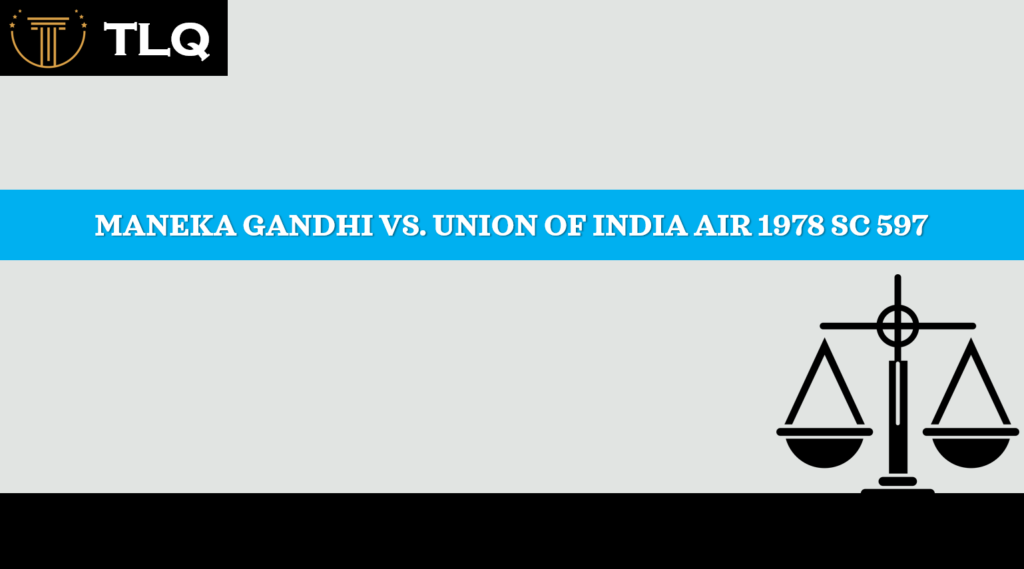Published On: September 28th 2025
Authored By: Mahi Srivastava
VIPS-TC
Every year since 2003, April 28 has been celebrated as World Day for Safety and Health at Work. However, the question arises: where is that safety when, in a place meant to save lives, she lost hers—her safety betrayed by the very institution she served? The Kolkata rape case serves as a chilling reminder that without basic occupational safety, even the noblest professions become dangerously vulnerable.
The Current Landscape of Occupational Safety in India
India is a growing economy and one of the leading developing countries in the world. With a population exceeding one billion, more than 90% of workers are employed in the informal economy, primarily in activities like agriculture, while less than 10% work in the organized sector, including industry and mining. New service industries such as Information Technology (IT) and outsourcing services are increasing at a rapid pace, as is the proportion of women in the workforce.
The occupational safety and health (OSH) scenario in India presents a dynamic phenomenon that illustrates how unprecedented growth and progress go hand in hand with significant challenges. These challenges include a huge workforce in the unorganized sector, availability of cheap labor, meager public spending on health, and inadequate implementation of existing legislation.
The Constitution of India calls upon the government to direct its policy “towards securing the health and safety of workers and ensuring that they are not abused and citizens are not forced by economic necessity to enter avocations unsuited to their age and strength.”¹ However, in India, many hazardous industries remain in production, causing both short-term and long-term health hazards as well as safety issues. Some of the major occupational risks include accidents, pneumoconiosis, skeletal injuries, and hearing loss.
The Business Case for Workplace Safety
There is legitimate curiosity about why so much emphasis is placed upon the occupational health and safety of workers. The answer lies in numerous studies that demonstrate the link between organizational success and overall well-being with the health of the workforce. As recent cases emerge and awareness about personal rights increases, individuals are growing more sensitive toward the rights and protection of the workforce.
In this technological era, consumers prefer brands or organizations that not only focus on their products but are also concerned with the ethical standards they follow toward their workforce. Thus, a good safety and health record has become essential, offering businesses a competitive edge by fostering trust among consumers and increasing profitability. Despite these tangible benefits, the primary factor that compels employers to maintain a safe working environment remains the legal framework governing workers’ health and safety.
Constitutional Foundations
The roots of occupational safety and health laws in India lie in its constitutional provisions. Labour is a concurrent subject under List III of Article 246,² which states that both the central government and state governments have the power to make laws on this matter.
The Constitution of India, under the Directive Principles of State Policy, enshrines detailed provisions relating to the safety and health of workers in all economic activities. These Directive Principles provide for securing the health and strength of employees, both men and women, ensuring that the tender age of children is not abused. Key provisions include:
– Article 39: The Constitution ensures that citizens are not compelled by economic necessity to undertake occupations unsuited to their age or physical capacity³
– Article 42: Mandates just and humane conditions of work and provision of maternity relief⁴
– Article 43A: Directs the government to take appropriate steps—through legislation or other means—to secure the participation of employees in the management of industrial undertakings, establishments, or other organizations⁵
– Article 24: Prohibits the employment of children below the age of 14 in factories, mines, or any other hazardous occupations⁶
Judicial Interpretation
Several landmark cases demonstrate the courts’ interpretation of different health and safety legislations. In Ravi Shankar Sharma v. State of Rajasthan,⁷ the Court held that the Factories Act is both social and moral legislation that provides for the health and safety of workers in factories. The Act serves multiple purposes, including protecting workers from workplace exploitation and providing recourse in case of violations.
Similarly, in Bhikusa Yamasa Kshatriya (P.) Ltd. v. Union of India,⁸ the court held that the Factory Act was enacted with the objective of protecting workers employed in factories against industrial and occupational hazards.
The Economic Imperative
Workplace safety is a crucial aspect frequently overlooked by employers, who often consider it an expense and burden. However, it is actually an investment. Ensuring the safety and health of workers leads to fewer fatal accidents, resulting in better workforce participation, increased productivity, and overall improved economic efficiency for companies.
Therefore, it is the government’s duty to uphold these constitutional provisions by formulating and enforcing policies that ensure workplace safety and health. In this context, the government has introduced various policies on safety, health, and environment at the workplace. These policies offer essential guidelines for promoting workplace safety and establish a statutory framework, along with administrative and technical support. They also emphasize the importance of research, the development of preventive strategies, effective monitoring, and the integration of safety, health, and environmental improvements into other governmental policies.
The Vishakha Case⁹ represented a significant step in addressing a formal legal structure for sexual harassment, though more needs to be done. It introduced The Sexual Harassment of Women at Workplace (Prevention, Prohibition and Redressal) Act, 2013, which laid down guidelines for protecting the right to life and personal liberty. Other significant Acts include the Factories Act, 1948; Mines Act, 1952; The Employees’ State Insurance Act, 1948; The Maternity Benefit Act, 1961; and many others.
The Occupational Safety, Health and Working Conditions Code 2020
Against the backdrop of COVID-19 and massive migration of people, the Occupational Safety, Health and Working Conditions Code 2020 was passed on the recommendation of the Second National Commission on Labour by the Ministry of Labour and Employment. The code consolidates and amends 13 existing labour laws related to the health, safety, and working conditions of workers, including laws such as the Factories Act, 1948; The Mines Act, 1952; The Inter-State Migrant Workmen (Regulation of Employment and Conditions of Service) Act, 1979; and The Dock Workers (Safety, Health and Welfare) Act, 1986.
Salient Features of the Code
The code includes several progressive features:
– Free health check-ups for workers
– A database to be maintained for inter-state migrant workers
– A social security fund for the benefit of workers in the unorganized sector
– Establishment of a National Occupational Health and Safety Board to provide necessary advice to the centre¹⁰
– Creation of State Occupational Health and Safety Advisory Boards as advisory bodies to state governments¹¹
Administrative Changes: Labour inspectors from earlier acts are now replaced with Inspector-cum-Facilitators under the new code. The District Magistrate will serve as the Inspector-cum-Facilitator for mines within their local limits.¹² Additionally, qualified medical practitioners will be appointed as medical officers for medical supervision.¹³
Women’s Employment: The code provides for employment of women in all establishments for all types of work. Women can now work late at night beyond 7 PM and before 6 AM,¹⁴ subject to conditions related to safety, working hours, and their consent.¹⁵
Licensing: A single-window mechanism for obtaining a common all-India license is provided for contractors, factories, and industrial premises for beedi and cigar work, helping to reduce bureaucratic hassle.
Gig and Platform Workers: Significantly, the code defines gig and platform workers as individuals who perform work or services through digital platforms or intermediaries.¹⁶ Key provisions for gig and platform workers include social security benefits such as life and disability coverage, health and maternity benefits, and old-age protection.
Penalties and Compensation: The code enables courts to award up to 50% of monetary penalties to workers who are victims of accidents or to the legal heirs in case of death.¹⁷ The code also grants overriding powers to the Central Government to regulate general safety and health across India during epidemics or pandemics.¹⁸
Working Hours: Section 25 provides for a maximum working shift of 8 hours in any establishment (which may be less for mine workers). Workers are entitled to twice their daily wage for overtime work, and overlapping shifts are prohibited. Adult factory workers are entitled to leave every 20 days of work, while adolescents are entitled to leave every 15 days of work, provided they complete 180 days of work in a year.¹⁹
Limitations and Challenges
However, the code has significant limitations. Neither workers nor their representative unions are completely aware of its ramifications, nor do they take full advantage of them. Consequently, despite comprehensive legislation, the number of accidents in India remains very high.
Key Deficiencies
Limited Coverage: The law excludes apprentices and trainees from its scope, even though work allocated to them is the same as that of contractual and permanent employees. It has not adequately addressed the unorganized sector, which comprises the majority of India’s working population.
Establishment Size Threshold: The code applies to establishments with 10 or more workers, but many small enterprises employ fewer than 10 workers. By excluding these small enterprises and the informal sector, a significant gap is created that leads to poor enforcement of the legislation.
Sector-Specific Guidelines: While there are various guidelines for different types of establishments, detailed guidelines for the healthcare sector are still absent.
Mental Health: During the pandemic, when individuals were confined to their homes, mental health issues such as anxiety, stress, and depression surged. Mental health has emerged as a pressing concern and warrants urgent attention from legislators. It is imperative to formulate specific laws addressing mental well-being, particularly in workplace environments.
Medical Fitness Standards: The new code provides that no person who is medically unwell, has defective vision, or has a tendency toward dizziness shall be allowed to work in building or construction operations where they are likely to be injured or injure co-workers. This provision is specifically mentioned for construction work, raising concerns that the same measures should apply to other sectors as well.
Dispute Resolution: No proper judicial system has been established to efficiently manage disputes arising under the code.
Social Security and Future Directions
The government has provided social security for workers in the unorganized sector through various schemes like Atal Pension Yojana, Pradhan Mantri Shram Yogi Maan-dhan (PM-SYM), and AB-PMJAY. However, these schemes need to be formalized and standardized to match those available to the organized sector.
A comprehensive plan is essential to address the deteriorating employment situation, which has been significantly aggravated by the pandemic. Additionally, there is a pressing need to develop a national database of unorganized workers to provide the government with accurate data for effective policy formulation and implementation.
In light of existing institutional and legal shortcomings, it is imperative for India to adopt international conventions as a progressive step toward ensuring occupational health and safety across all economic sectors. Adopting the 2022 Declaration of Fundamental Principles and Rights at Work (FPRW) represents a step in the right direction. India must take necessary measures to align with international standards set by the International Labour Organization (ILO), as these represent fundamental rights that every worker, regardless of sector, rightfully deserves.
Conclusion
Occupational health and safe working conditions are basic rights of every worker, irrespective of the sector in which they work. They are not privileges but fundamental rights. Our Constitution provides provisions ensuring this, making it imperative for the government to frame policies and regulations to fulfill these obligations.
A workplace is where individual workers spend a significant portion of their day and thus must be a space where safety, dignity, and mental peace are protected. A secure worker is a more focused and efficient worker, which in turn contributes to improved organizational performance and reputation. Therefore, investing in occupational safety and health is a step toward building a healthier, more equitable, and more prosperous workforce—where the dignity of labour is truly honored and the right to work without fear becomes a lived reality.
References
- INDIA CONST. art. 39
- INDIA CONST. art. 246
- INDIA CONST. art. 39
- INDIA CONST. art. 42
- INDIA CONST. art. 43A
- Occupational Health and Safety Legislation, LEGAL SERVICE INDIA, https://www.legalserviceindia.com/legal/article-9466-occupational-health-and-safety-legislation-in-india.html (last visited Apr. 13, 2025)
- AIR 1993 Raj. 117
- 1963 AIR 1591
- AIR 1997 SC 3011
- Section 16, The OSH Code 2020
- Section 14(1), The OSH Code 2020
- Section 42, The OSH Code 2020
- Section 43, The OSH Code 2020
- Section 44, The OSH Code 2020
- Section 74, The OSH Code 2020
- Section 113, The OSH Code 2020
- Section 123, The OSH Code 2020
- Section 25, The OSH Code 2020




